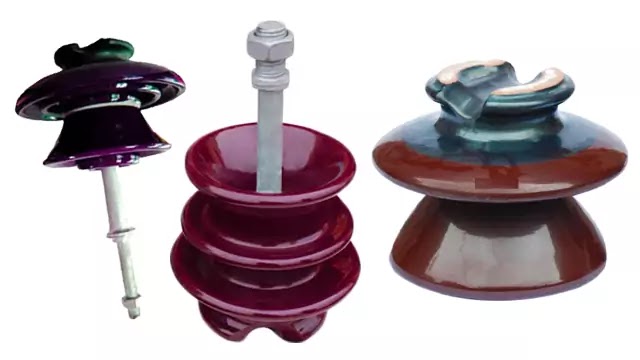
Pin Type Insulator.
An insulator is a
type of non-conductive material used to hold the conductor in an overhead line
and to isolate the conductor from other metal parts, including the cross arm of
the pole or tower.
{tocify} $title={Table of Contents}
There are different types of insulators, one of the most important is the insulator pin type insulator. In this article, we will discuss in detail about pin type insulators:
- What is the pin type insulator?
- Use of pin type insulator.
- Pin type insulator material.
- Advantages of using pin type insulators.
- Difficulty using pin type insulators.
What is the pin type insulator?
Insulators or
non-conductive objects that are used to hold a telegraph or utility (overhead
line) conductor and separate the conductor from different metal parts are
called pin type insulators.
Although this the insulator was originally an insulator developed a long time ago, it is still
widely used in transmission and distribution systems from low-pressure lines to
33 kV lines.
These insulators can be one-part, two-part, or three-part depending on the application voltage. In this case usually-
- One part in 11 kV system,
- Two-part in 33 kV system and
- If used in 8 KV system, a three-part pin type insulator is used.
Use of PIN Insulator:
- The pin type the insulator is mounted on the cross arm of the supporting tower or pole.
- Conductors are placed in the grooves at the top of these insulators.
- Usually a single pin insulator is used at low voltage and two or more insulators are used at high voltage while maintaining the correct thickness of the insulator.
- However, such insulators are not used in much higher voltage
- Insulators are large and heavy in shape.
- The length of the pin is greater.
- There is more pressure on the cross arm.
- The price is also high.
For these reasons,
pin type insulators with a voltage of more than 33 kV have not yet been used.
Pin type insulator material:
Non-conductive
materials like porcelain, ceramic, silicone rubber, polymer, etc. are used in
making these insulators. However, in most cases, Chinese clay or glass is used
to make these insulators.
In addition, when
making pin type insulators, it is designed in such a way that even if the upper
part (rain shed) is wet, the inner part is completely dry.
Advantages of using pin type insulator:
- The mechanical strength of pin type insulators is high.
- It's not that expensive.
- These insulators are relatively easy to design.
- Easy to maintain.
- It can be used both vertically & horizontally.
- Its creepage distance is safer than other insulators.
Difficulty in using pin type insulator:
- Pin type insulators are to be used with spindles.
- Its voltage rating is limited (up to 36 KV).
- The slightest error can damage its thread.
- If you use this insulator at high voltage, this insulator is much heavier than other insulators and is much larger in size.
- The longer the pin length of the larger insulator.
- Using a larger insulator puts more pressure on the cross arm.
- In addition, the cost of using more high voltage lines than other insulators is much higher.
